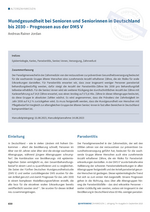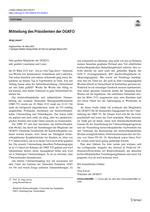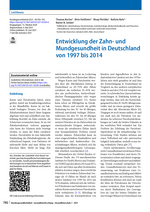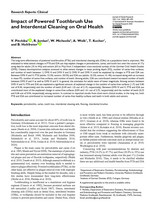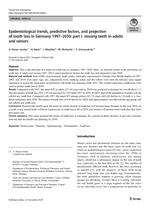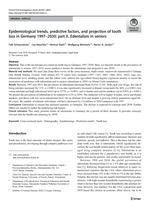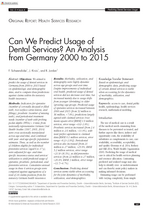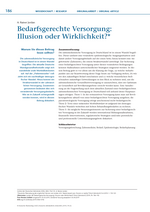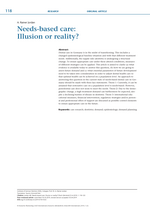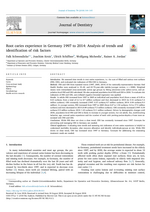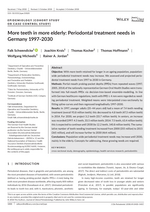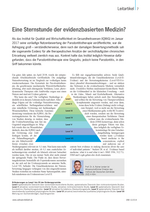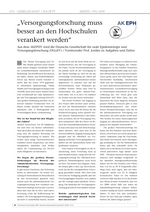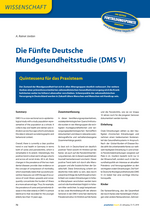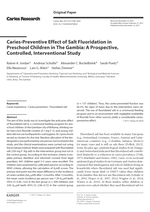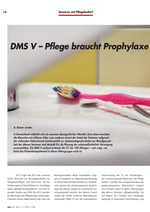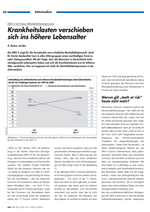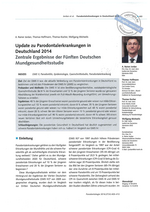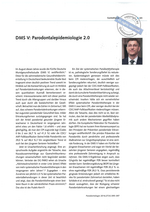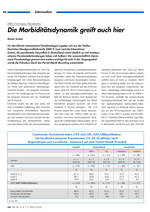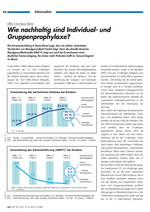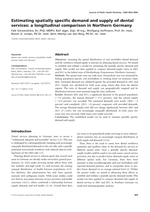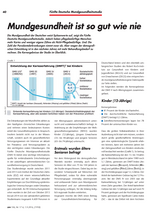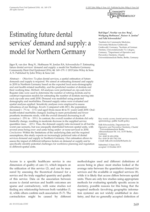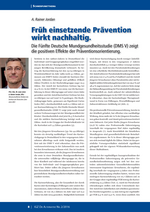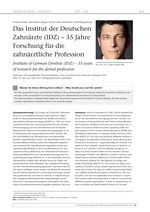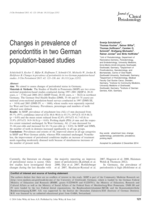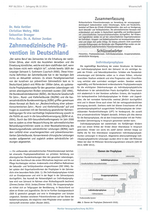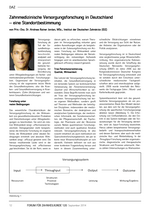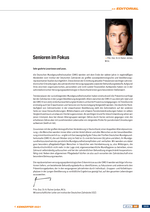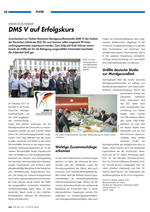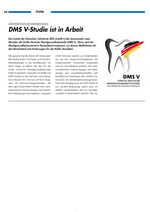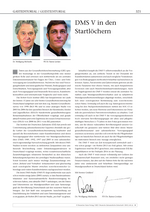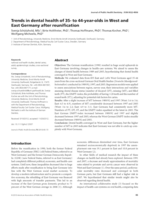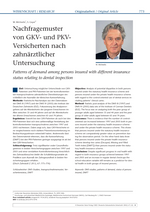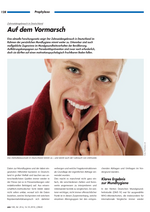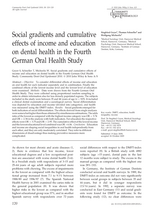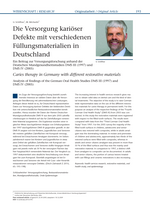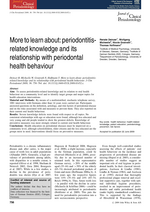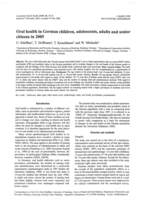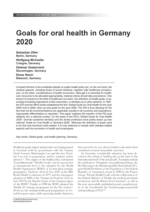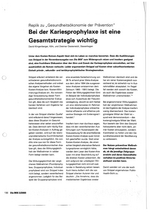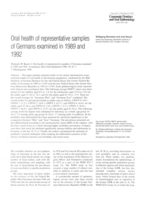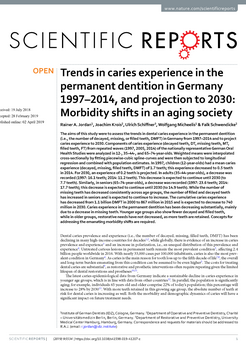
Gesundheitsversorgungsforschung und -epidemiologie
Autoren
Jordan, A. Rainer
Krois, Joachim
Schiffner, Ulrich
Micheelis, Wolfgang
Schwendicke, Falk
Schlagwörter
Dental Caries
Dental epidemiology
Dental caries experience
Karieserfahrung
Deutschland
DMS-Studien
Germany
German Oral Health Studies
Permanent dentition
Trends
Publikation — Zeitschriftenbeiträge
Titel
Trends in caries experience in the permanent dentition in Germany 1997–2014, and projection to 2030
Untertitel
Morbidity shifts in an aging society
Titel Ausgeschrieben
Scientific Reports
ISSN
2045-2322 (online)
Jahr
2019
Ausgabe
9
Issue
1
Seitenzahl
1-7
Erscheinungsdatum
02.04.2019
Trends in caries experience in the permanent dentition in Germany 1997–2014, and projection to 2030
Morbidity shifts in an aging society
The aims of this study were to assess the trends in dental caries experience in the permanent dentition (i.e., the number of decayed, missing, or filled teeth, DMFT) in Germany from 1997–2014 and to project caries experience to 2030. Components of caries experience (decayed teeth, DT, missing teeth, MT, filled teeth, FT) from repeated waves (1997, 2005, 2014) of the nationally representative German Oral Health Studies were analyzed in 12-, 35–44-, and 65–74-year-olds. Weighted means were interpolated cross-sectionally by fitting piecewise-cubic spline-curves and were then subjected to longitudinal regression and combined with population estimates. In 1997, children (12-year-olds) had a mean caries experience (decayed, missing, filled teeth, DMFT) of 1.7 teeth; this experience decreased to 0.5 teeth in 2014. For 2030, an experience of 0.2 teeth is projected. In adults (35–44-year-olds), a decrease was recorded (1997: 16.1 teeth; 2014: 11.2 teeth). This decrease is expected to continue until 2030 (to 7.7 teeth). Similarly, in seniors (65–74-year-olds), a decrease was recorded (1997: 23.6 teeth; 2014: 17.7 teeth); this decrease is expected to continue until 2030 (to 14.9 teeth). While the number of missing teeth has decreased consistently across age groups, the number of filled and decayed teeth has increased in seniors and is expected to continue to increase. The cumulative caries experience has decreased from 1.1 billion DMFT in 2000 to 867 million in 2015 and is expected to decrease to 740 million in 2030. Caries experience in the permanent dentition has been decreasing substantially, mainly due to a decrease in missing teeth. Younger age groups also show fewer decayed and filled teeth, while in older groups, restorative needs have not decreased, as more teeth are retained. Concepts for addressing the emanating morbidity shifts are required.


